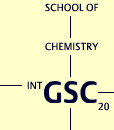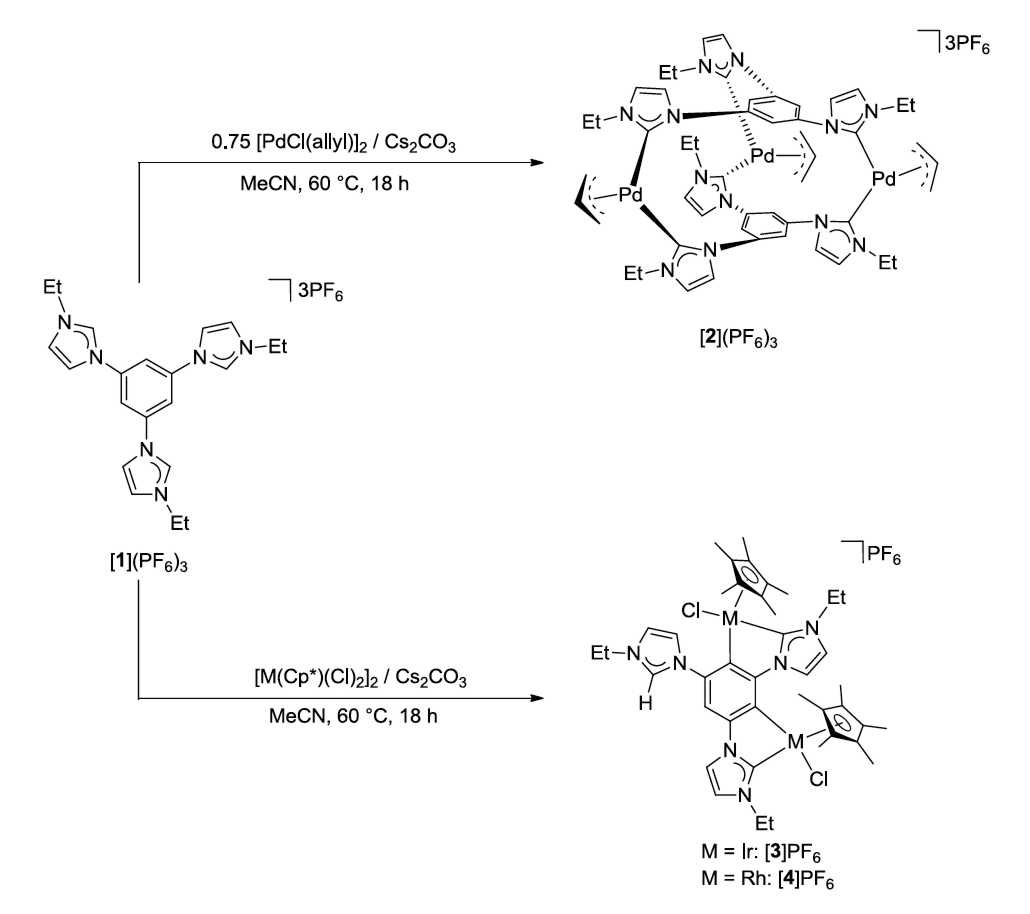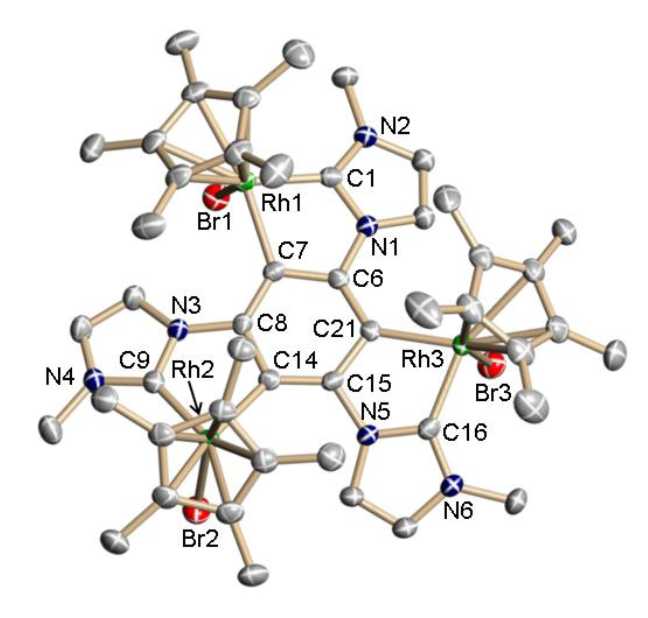 |


![]()
Name: Ramananda Maity
Diploma / M.Sc degree: IIT Madras, India
(July 2009)
PhD Project:
Homepage: http://www.uni-muenster.de/Chemie.AC/hahn/actual.html
Abstract of Research Project
N-heterocyclic carbenes (NHCs) have emerged as an important class of compounds over the
last couple of decades, because of their utility as ligands in organometallic chemistry and
catalysis. Complexes bearing cyclometallated NHC ligands are used as effective catalysts in
the deuteration of a wide range of organic molecules. As a part of my doctoral work, we have
demonstrated that complexes of different nuclearity and coordination geometry result from
the reaction of a trisimidazolium salt with different metal ions subsequently provided.
Reaction of the benzene derived trisimidazolium salt [1](PF6)3 with [PdCl(allyl)]2 gave trinuclear complex [2](PF6)3 with three Pd(allyl) moieties sandwiched in between two tricarbene ligands whereas the reaction of the same trisimidazolium salt with [M(Cp*)(Cl)2]2 (M = Ir, Rh) resulted in the formation of doubly orthometallated complexes [3-4]PF6 where each metal center is coordinated by an NHC donor and orthometallates the central phenyl ring while one imidazolium unit remains unreacted (Scheme 1). The Cs2CO3 deprotonates the imidazolium and absorbs the formed HCl in the reductive elimination step.
 Scheme 1. Preparation of dinuclear and trinuclear complexes.
Scheme 1. Preparation of dinuclear and trinuclear complexes.
The unreacted imidazolium group in [4]PF6 can be metallated with [Rh(Cp*)(Cl)2]2 to give the trinuclear triply orthometallated complex by following an alternative method (Scheme 2). The metal precursors employed determined the outcome of the reaction leading to different homopolynuclear structures. We could demonstrate, that a modification of the reaction conditions allowed the selective preparation of doubly or triply orthometallated complexes. This discovery ultimately allowed the preparation of heterobimetallic complexes and corresponding studies are underway.
To explain the observation that the metallation reaction only proceeds twice at the
trisimidazolium cation [1]3+ (Scheme 1), we have studied both the steric and the electronic
effects by changing the nitrogen substituents.
 Figure 1. Crystal structure of the triply orthometallated trinuclear RhIII complex.
Figure 1. Crystal structure of the triply orthometallated trinuclear RhIII complex.
Publications
R. Maity, C. Schulte to Brinke, F. E. Hahn
Heterotrimetallic complexes of a phenylene-bridged tricarbene ligand
Dalton Trans. 42 (2013), 12857-12860.
R. Maity, H. Koppetz, A. Hepp, F. E. Hahn
Heterobimetallic Carbene Complexes by a Single-Step Site-Selective
Metalation of a Tricarbene Ligand
J. Am. Chem. Soc. 135 (2013), 4966-4969
R. Maity, A. Rit, C. Schulte to Brinke, C. G. Daniliuc, F. E. Hahn
Metal center dependent coordination modes of a tricarbene ligand
Chem. Commun. 49 (2013), 1011-1013.
Ramananda Maity
eMail: Ramananda Maity